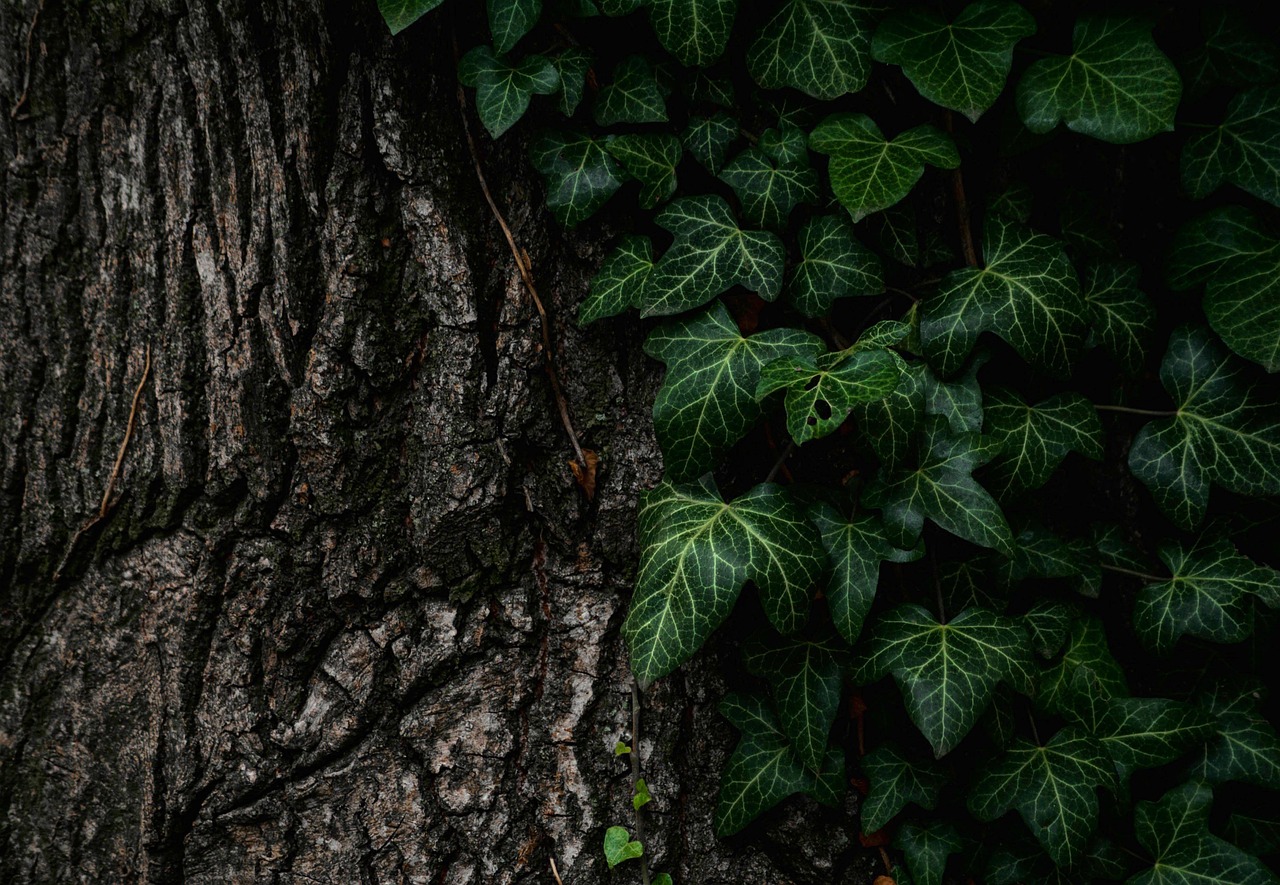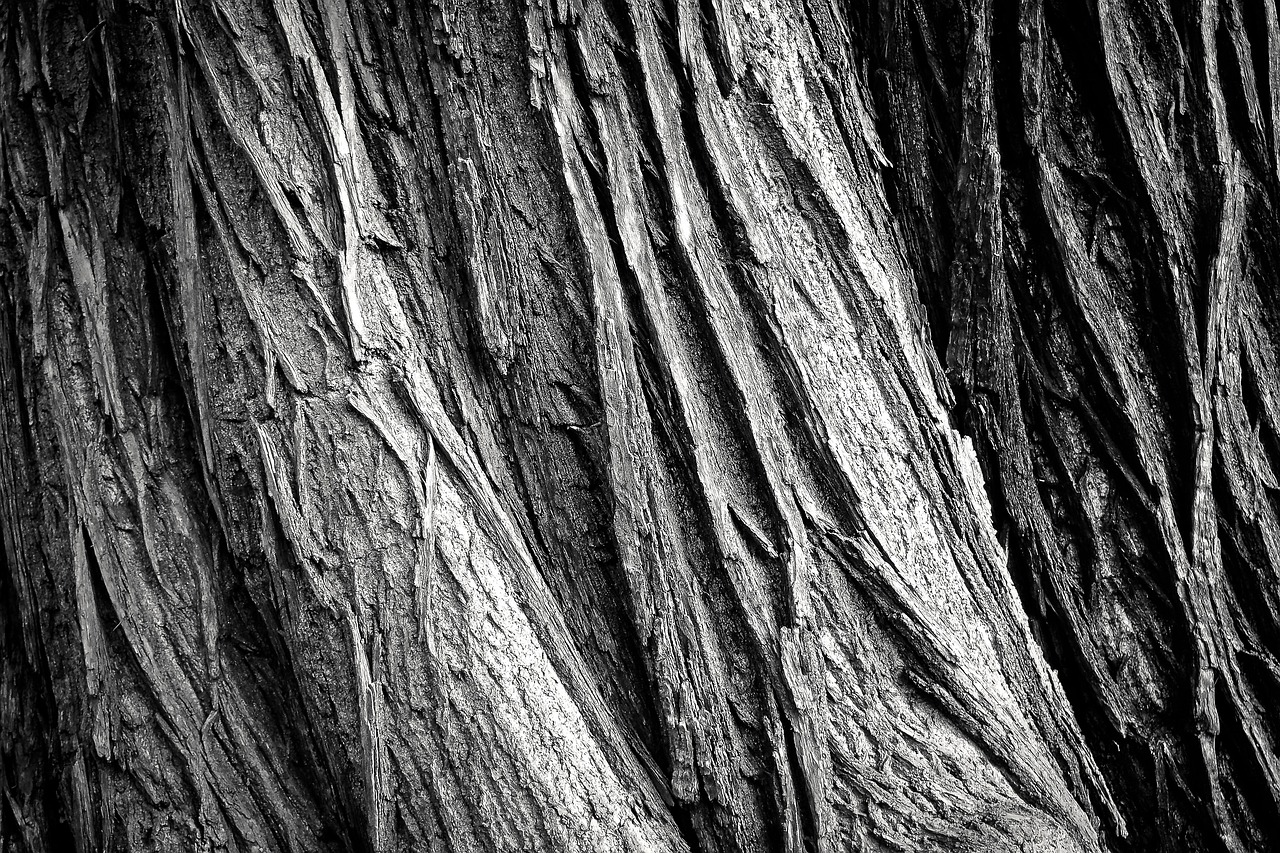Tree bark holds spiritual meaning as it symbolizes protection, strength, and renewal. Different cultures attribute various meanings to bark, often viewing it as a bridge between the physical and spiritual worlds, helping to connect humans with nature.
Throughout history, trees have been regarded as sacred in many cultures. The bark of a tree is not just its outer layer; it is a vital component that protects the inner workings of the tree. This protective role has often been associated with spiritual significance, representing safety and security. The patterns, textures, and colors of bark can also invoke feelings of grounding and connection to the earth.

In many traditions, trees are seen as living beings that embody wisdom and experience. Their bark can be viewed as a metaphor for the layers of life experiences that shape individuals. As such, tree bark can serve as a powerful symbol in rituals and meditative practices aimed at personal growth and transformation.
Symbolism Across Cultures
The spiritual significance of tree bark varies widely across different cultures and belief systems. Here are some notable examples:
- Native American Traditions: Many Native American tribes believe that trees are sacred beings. The bark is often used in ceremonies and rituals, symbolizing healing and protection. For instance, birch bark is commonly used to create canoes and containers, reflecting its practical and spiritual importance.
- Celestial Connections: In Celtic traditions, trees were associated with deities. The bark represented the connection between the earthly realm and the spiritual world. Oak bark, for example, was revered for its strength and connection to wisdom.
- Asian Philosophies: In some Asian cultures, tree bark is used in traditional medicine. It is believed to carry healing properties that connect physical health with spiritual well-being.
Many cultures celebrate trees through festivals and rituals that honor their life cycles. These events often include storytelling, music, and art inspired by the visual beauty and significance of tree bark.

Bark in Spiritual Practices
Tree bark plays a role in various spiritual practices around the globe. Here are some ways it is used:
- Ritual Artifacts: Certain cultures create artifacts from tree bark for use in rituals. These items often serve as tools for connecting with spiritual energies.
- Offerings: In some traditions, pieces of bark are offered to deities or spirits as a form of respect or prayer.
- Meditation Aids: Individuals may use the texture and smell of tree bark during meditation to enhance focus and deepen their connection to nature.
The tactile experience of feeling tree bark can evoke a sense of calm and grounding. Many people find solace in touching the rough surfaces of ancient trees, creating a sensory connection that deepens their spiritual practice.
The Therapeutic Aspects of Tree Bark
The therapeutic properties of tree bark extend beyond its spiritual significance. Many types of bark have been used in herbal medicine for centuries. For example:

| Bark Type | Uses | Spiritual Significance |
|---|---|---|
| Cinnamon Bark | Flavoring, digestive aid | Symbol of prosperity and abundance |
| Willow Bark | Pain relief, anti-inflammatory | Represents resilience and adaptability |
| Birch Bark | Crafting, healing | Signifies new beginnings and renewal |
This table illustrates how various types of tree bark not only have medicinal properties but also embody deeper spiritual meanings. The interplay between physical benefits and spiritual symbolism makes tree bark a fascinating subject for exploration.
Understanding how tree bark holds spiritual meaning invites individuals to reflect on their relationship with nature. It encourages a deeper appreciation for the ways trees contribute to both physical health and emotional well-being.
Tree Bark in Folklore and Mythology
Tree bark has captured the imagination of many cultures throughout history. In folklore and mythology, various types of trees and their bark have been imbued with rich narratives and teachings. These stories often highlight the significance of trees as symbols of life, death, and rebirth.
Many myths involve gods or deities who are associated with specific trees. These trees often carry special meanings, and their bark may be used in rituals or as offerings. Here are some notable examples:

- Yggdrasil: In Norse mythology, Yggdrasil is the World Tree, a massive ash tree that connects the nine worlds. Its bark is believed to hold secrets of the universe and serves as a guardian to the realms.
- The Bodhi Tree: In Buddhism, the Bodhi Tree is where Siddhartha Gautama attained enlightenment. The bark of this sacred fig tree symbolizes wisdom and awakening.
- Holly: In Celtic traditions, holly trees are associated with fertility and protection. The bark is often used in rituals during winter solstice celebrations.
These examples illustrate how tree bark is woven into the fabric of spiritual narratives. The connection between trees and their bark serves as a reminder of nature’s power and mystery.
The Role of Bark in Shamanic Practices
Shamanism, a practice found in various cultures worldwide, often involves connecting with nature to achieve spiritual insight. Bark plays a significant role in these practices, serving as a medium for communication with the spirit world.
Shamans may use bark in several ways:
- Drumming: Some shamans create drums from tree bark. The sound produced is believed to facilitate journeys into the spirit realm.
- Crafting Ritual Tools: Bark can be fashioned into various tools used in ceremonies. These tools often carry the spiritual essence of the tree from which they are made.
- Offering: Bark may be burned or offered to spirits during rituals as a sign of respect and gratitude.
The use of tree bark in shamanic practices highlights its importance in building a relationship between humans and the natural world. The act of honoring the tree through its bark reinforces the belief in interconnectedness with nature.
Medicinal Use and Spiritual Healing
The medicinal properties of tree bark not only provide physical healing but also play a role in spiritual wellness. Many cultures believe that healing begins with a strong connection to nature, and tree bark serves as a bridge to this connection.
Some common barks used for their healing properties include:
| Bark Type | Common Uses | Spiritual Healing Aspect |
|---|---|---|
| Red Willow Bark | Pain relief, fever reducer | Encourages emotional balance and stability |
| Cascara Sagrada | Laxative, digestive aid | Promotes cleansing and renewal |
| Slippery Elm Bark | Sore throat relief, digestive support | Enhances communication and self-expression |
This table illustrates how different types of tree bark can serve both physical health needs and spiritual healing practices. Many individuals find that incorporating these natural elements into their wellness routines opens pathways for deeper spiritual connections.
Bark in Modern Spirituality
In contemporary spiritual practices, tree bark continues to hold significance. Many people use it in meditation, rituals, or as part of their daily spiritual routines. The unique textures and scents of different barks can enhance mindfulness and grounding exercises.
Here are several ways modern practitioners incorporate tree bark:
- Aromatherapy: Essential oils derived from tree bark, such as cinnamon or sandalwood, are used for their calming effects.
- Crafting Altars: Some individuals include pieces of bark on their altars as symbols of protection and connection to nature.
- Artistic Expression: Artists use tree bark in mixed-media projects to symbolize life cycles and transformation.
These practices reflect an ongoing reverence for the natural world and highlight the enduring spiritual meanings associated with tree bark. As individuals seek deeper connections with nature, tree bark remains a powerful symbol of strength, protection, and renewal.
The Connection Between Tree Bark and Nature Spirits
In many cultures, trees are believed to house nature spirits or deities. The bark serves as a protective covering for these spirits, making it an important element in rituals and practices aimed at connecting with the spiritual realm. Understanding this connection can deepen one’s appreciation for the role of trees in spiritual life.
Many traditions recognize specific trees as sacred, often linked to particular spirits. Here are a few examples:
- Oak Tree: In Celtic traditions, the oak is seen as a stronghold for spirits. Its bark is often used in rituals to honor ancestors and connect with earth energies.
- Pine Tree: In several indigenous cultures, the pine is associated with purification. The bark may be used in ceremonies to invite protection from negative energies.
- Willow Tree: The willow is often connected to water spirits. Its bark is thought to embody emotional healing and is used in rituals that seek to balance feelings.
The belief in nature spirits residing within trees lends a mystical quality to tree bark. Many practitioners find that engaging with the bark of sacred trees allows them to tap into ancient wisdom and guidance.
Using Tree Bark in Rituals and Ceremonies
Tree bark can play a significant role in various rituals and ceremonies. It serves as a medium through which individuals can express intentions, connect with spiritual energies, and honor nature. Here are some common ways tree bark is utilized:
- Protection Spells: In some practices, pieces of bark are carried or placed around homes to ward off negative energies.
- Healing Rituals: Bark from certain trees is used in healing ceremonies, often combined with other natural elements like herbs and flowers.
- Seasonal Celebrations: During solstices or equinoxes, tree bark may be used in altars or as offerings to celebrate seasonal changes.
The versatility of tree bark makes it an essential component in many spiritual practices. It can adapt to various forms and uses, reflecting the unique qualities of the tree it comes from.
The Artistic Representation of Tree Bark
Artists and craftsmen have long been inspired by the beauty of tree bark. This appreciation often translates into artistic expressions that reflect not only visual appeal but also deeper meanings associated with spirituality and nature.
Here are some forms of art that prominently feature tree bark:
- Textile Art: Some artists incorporate tree bark fibers into textiles, creating pieces that carry both aesthetic and symbolic significance.
- Sculpture: Sculptors may use pieces of bark as a base for their work, imbuing their creations with the essence of the tree.
- Papermaking: Traditional papermaking techniques often involve using bark. This handmade paper can be used for writing prayers or intentions.
The artistic representation of tree bark allows individuals to explore their relationship with nature creatively. It fosters a deeper connection, encouraging reflection on the messages conveyed through these natural forms.
Bark in Environmental Spirituality
As environmental awareness grows, many individuals seek ways to connect spiritually with nature. Tree bark becomes a significant element in this exploration, symbolizing harmony and balance within ecosystems.
Practitioners of environmental spirituality may engage with tree bark through:
- Nature Walks: Observing and touching different types of bark during nature walks encourages mindfulness and appreciation for the environment.
- Recycling Practices: Using fallen bark or sustainably sourced materials for spiritual practices reflects respect for nature.
- Community Initiatives: Participating in tree planting or conservation efforts serves as a way to honor trees and their spiritual significance.
This engagement not only honors the physical aspects of trees but also reinforces their spiritual meanings. By recognizing the vital role trees play in our ecosystems, individuals can deepen their spiritual journeys while contributing positively to the environment.
The Future of Tree Bark in Spiritual Practices
As society continues to evolve, so do spiritual practices surrounding nature. The future may see an increased emphasis on sustainable practices that honor tree bark without causing harm to the trees themselves. This could involve:
- Sustainable Sourcing: Awareness of ethical harvesting methods will likely grow, ensuring that tree bark can be used without harming the trees.
- Education and Workshops: More educational programs may emerge, teaching individuals about the spiritual significance of trees and how to connect with them responsibly.
- Integration with Technology: Digital platforms may provide new ways to explore the meanings of tree bark through virtual rituals, interactive experiences, and community building.
The ongoing exploration of tree bark’s spiritual meanings invites individuals to reflect on their connection with nature. As awareness expands, so does the appreciation for these ancient symbols that continue to inspire and guide us on our spiritual paths.
The Intersection of Ecology and Spirituality
As the world becomes increasingly aware of environmental issues, the spiritual significance of tree bark and trees, in general, is gaining renewed attention. This intersection of ecology and spirituality encourages a deeper understanding of how nature plays a vital role in human life. By recognizing the intrinsic value of trees, individuals can cultivate a more profound respect for the earth and all its inhabitants.
One emerging trend is the practice of eco-spirituality, which emphasizes living in harmony with nature. This philosophy often incorporates elements of indigenous wisdom, which teaches that all living beings are interconnected. Tree bark, as a symbol of protection and strength, fits neatly into this framework, reminding practitioners of their relationship with the natural world.
Here are some ways that eco-spirituality can enhance the understanding of tree bark’s spiritual meaning:
- Mindful Living: Eco-spirituality encourages mindfulness in daily activities, fostering a connection to nature that can be reinforced through interactions with tree bark.
- Community Engagement: Participating in local conservation efforts helps individuals recognize the importance of trees and encourages the sharing of spiritual practices related to them.
- Holistic Healing: Integrating natural elements like tree bark into healing practices promotes an awareness of the physical, emotional, and spiritual benefits of nature.
In this way, tree bark serves as a bridge connecting individuals to both their spiritual journeys and ecological responsibilities. By honoring the natural world, people can cultivate a sense of stewardship that enhances their spiritual growth.
Exploring Diverse Spiritual Traditions
The spiritual meanings attributed to tree bark are not limited to a single culture or belief system. Across the globe, diverse traditions celebrate the significance of trees and their bark. Learning about these varied perspectives enriches our understanding and appreciation of tree bark’s spiritual role.
Some additional cultural connections include:
- African Traditions: In many African cultures, trees are seen as symbols of life and ancestry. The bark may be used in ceremonies to honor ancestors and invoke blessings.
- Indigenous Australian Cultures: Aboriginal peoples view certain trees as sacred. The bark is sometimes used in traditional art forms, carrying spiritual meanings that reflect their connection to the land.
- Asian Philosophies: In various Asian cultures, trees represent balance and harmony. The use of tree bark in rituals often reflects these ideals, emphasizing the interconnectedness between humans and nature.
These diverse traditions illustrate that the spiritual significance of tree bark transcends geographical boundaries. By exploring these various beliefs, individuals can deepen their understanding of how tree bark holds meaning across cultures.
Final Thoughts
The exploration of how tree bark holds spiritual meaning reveals a rich tapestry of beliefs and practices that span cultures and time periods. From serving as symbols of protection and renewal to facilitating connections with nature spirits, tree bark embodies a profound significance that resonates with many people today.
As society shifts towards greater environmental awareness, the spiritual meanings associated with trees and their bark continue to evolve. The commitment to sustainable practices and responsible interactions with nature will likely shape future spiritual journeys. By honoring the sacredness of trees and their bark, individuals not only enrich their spiritual lives but also contribute to the health of the planet.
Ultimately, whether through rituals, artistic expressions, or mindful engagement with nature, tree bark invites us to reflect on our relationship with the earth. It serves as a reminder that we are part of an intricate web of life—one that deserves respect, appreciation, and care. As we journey forward, let us carry the wisdom of tree bark with us, embracing its teachings as we seek deeper connections with ourselves, each other, and the natural world around us.
